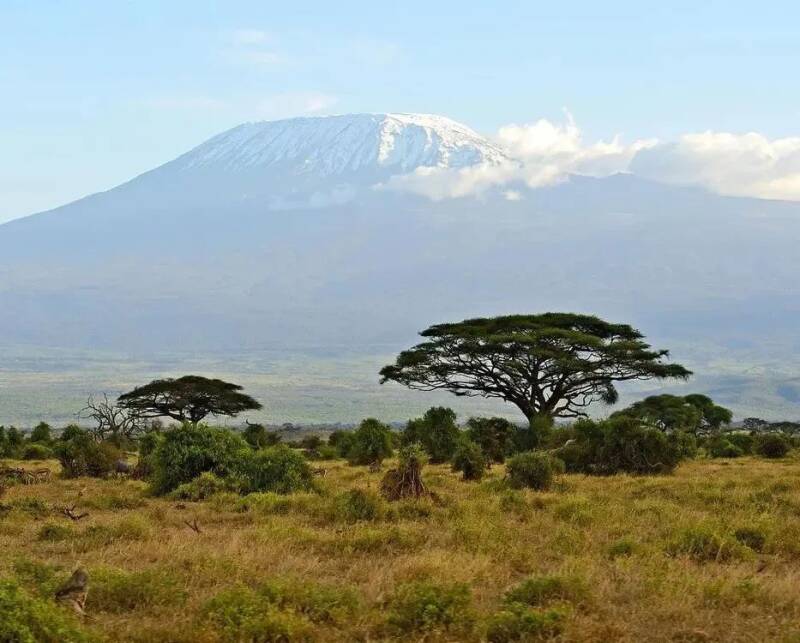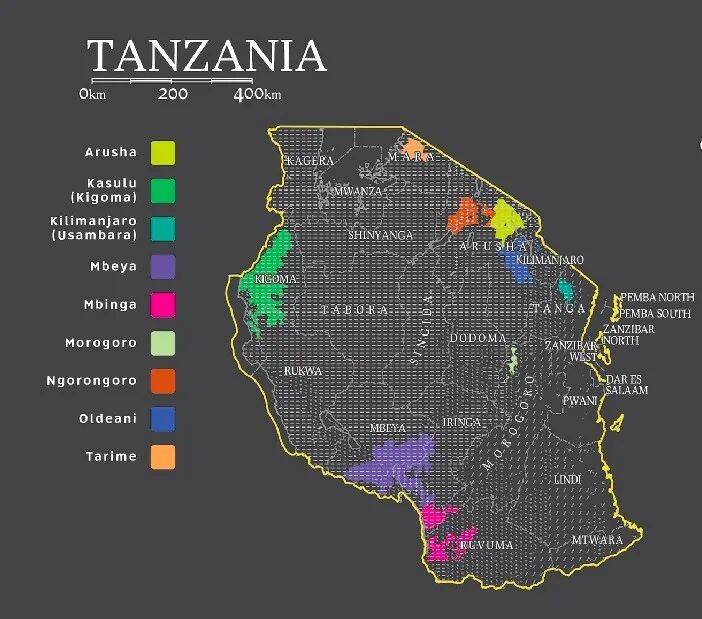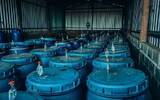Tanzania Coffee beans | introduction to Kilimanjaro Coffee beans
In the African region, there are many well-known coffee producing countries, such as Ethiopia, Kenya, Rwanda and Tanzania. Among them, Tanzania is one of the three coffee giants in Africa, and it is also known as the "coffee gentleman" in Europe.
Tanzanian coffee
Tanzania is located in eastern Africa, south of the equator, bordering eight countries, including Kenya, Uganda, Burundi and Rwanda, and bordering the Indian Ocean to the east. The whole terrain of Tanzania is high in the northwest and low in the southeast, showing a ladder shape as a whole. The eastern coast is a lowland, the western inland plateau accounts for more than half of the total inland area, the East African Rift Valley runs north and south from Lake Malawi, and Mount Kilimanjaro in the northeast of the country, which is 5895 meters above sea level, is the highest peak in Africa.

The eastern coast and inland lowlands of Tanzania have a savanna climate, while the western inland plateau has a tropical mountain climate, with an annual average temperature of 21 ℃-26 ℃. Although the country has less rainfall, with less than 1000 millimeters of rainfall in the 80-ton area, Tanzania has many rivers and lakes and is rich in hydropower resources. Coffee beans are mainly grown in Mount Kilimanjaro and the southern region. Mount Kilimanjaro is an extinct volcano and high above sea level, giving Tanzanian coffee a mellow texture, suitable acidity and strong aroma. Tanzanian coffee developed in the hands of German and British colonists, and was loved by Europeans for a long time and joined the ranks of famous products, so Europeans gave Tanzanian coffee the title of "coffee gentleman".
Kilimanjaro production area
Tanzania has a wide range of coffee producing areas, mainly including Kilimanjaro, Ruvuma, Mbeya, Kighoma and other places, 90% of which are grown on small farms. One of the most famous coffee producing areas is Kilimanjaro.

Mount Kilimanjaro, located in northeastern Tanzania, is the highest mountain on the African continent, with an elevation of 5895 meters and perennial snow. It is mainly composed of three extinct volcanoes, Kibo, Mavenz and Sheila. Coffee is grown in areas 1050-2500 meters above sea level. High enough altitude, volcanic soil, and pure snow-melting water are the most suitable areas for growing coffee. The harvest time of coffee in Kilimanjaro is from July to December every year, and the main varieties are bourbon, iron pickup and Kent.
Iron pickup
Iron pickup is one of the most important Arabica varieties in coffee genetics in the world. This variety of plant is relatively tall, its yield is relatively low, easy to suffer from major diseases, but good quality, suitable for planting in high altitude areas, the higher the altitude, the better the quality. The variety originated in Ethiopia and has since experienced continuous spread. at the end of the 18th century, it spread throughout Central America until the 1940s, when iron pickups were grown in most coffee plantations in South and Central America. However, due to its low production and susceptibility to disease, it has been gradually replaced, but it is still grown in Peru, Tanzania, Jamaica and other countries. The iron pickup in Jamaica also made the famous Blue Mountain Coffee.
Qianjie Coffee Tanzania Kilimanjaro Coffee Bean production area: Kilimanjaro production area altitude: 1300-2000 m Variety: iron truck treatment: washing flavor: citrus honey berry nut tea feeling
The beans from the Kilimanjaro producing area of Qianjie Coffee are washed and moderately roasted. Qianjie will use the proportion of V60 Jade 15, 92 ℃ water temperature for cooking, the entrance will have a soft acidity, with citrus, berry, honey and nut flavor, soft tea taste, overall balance.
Important Notice :
前街咖啡 FrontStreet Coffee has moved to new addredd:
FrontStreet Coffee Address: 315,Donghua East Road,GuangZhou
Tel:020 38364473
- Prev

How should the champion claw coffee beans be cooked? What should be paid attention to in the Sidra extraction of the estate of the Colombian dividing line?
As the champion bean of the 2022 cooking event, Xizao has always received great attention. But there are a lot of friends in the background reaction, they rushed out of the coffee taste is relatively light, not as full as imagined! Therefore, Qianjie is back to its old business today. I would like to share with you how to rush this hope claw.
- Next

The Ethiopian government hopes to solve the recent chaos in the coffee industry
Recently, according to local reports in Ethiopia, the Ethiopian Ministry of Agriculture and the Coffee and Tea Authority are concerned about coffee farmers' default in providing credit to exporters and suppliers, so government officials hold meetings with farmers. and hope to solve the problem as soon as possible. In recent months, Ethiopian exporters and suppliers
Related
- Being chased out of the rain in front of Starbucks?! Store: Sheltering from rain under umbrellas poses a safety hazard
- The white moonlight has changed?! Lucky launches "Big Winter Pear American"
- Hand-brewed coffee three-stage method, high-sweet and universal brewing method to share! What does the high sweet water level of hand-brewed coffee mean?
- What is the difference between raw, refined and full espresso coffee? How to extract espresso and taste good?
- A complete list of coffee bean names and their meanings! What is Yejia Shefi coffee? Where is Mantelin coffee?
- What grade does Arida Manor Kaduai coffee beans belong to? What treatment is Arida ASD slow anaerobic sun exposure?
- The milk tea cup becomes smaller?! Overlord Tea Girl launches a new "Return to Yunnan" series
- Accused of selling counterfeit and high-priced coffee beans! Well-known boutique coffee brand "Oukelao" bowed and apologized!
- How to make espresso dumplings? Can I eat coffee and glutinous rice balls together?
- Save the unformed and stagnant powder cakes in one second! What is the problem with stagnant water in the powder bowl of the espresso machine?

